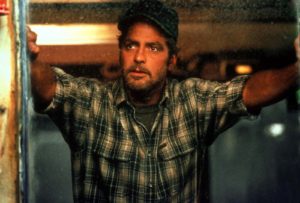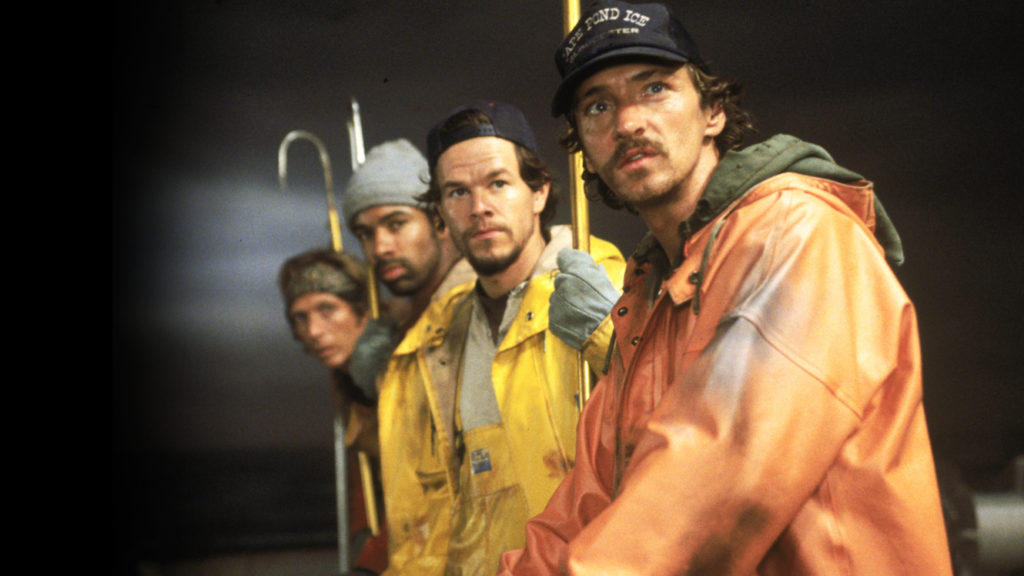Checking off a list in a grocery store, most of us don’t pay much mind to where that fresh haddock, swordfish, or halibut came from. However, consult any “Most Dangerous Jobs” list, and, invariably, you’ll find fishing – particularly deep sea fishing – cresting the list every time. According to CNN, per 100,000 workers, there are 116 fishing fatalities – making fishing a dangerous, and undervalued enterprise. However, this unsung profession got a bit of a spotlight shone on it when author Sebastian Junger published “The Perfect Storm,” in 1997 – a non-fiction narrative speculation of the fates of the seamen on board the Andrea Gail – a medium-sized sword fishing boat from Gloucester, Mass. that went missing during the Halloween Nor’easter of 1991. The vicious storm was sardonically dubbed ‘The Perfect Storm,’ the result of a hurricane, a cold front, and a northeaster that merged off of Nova Scotia before hammering the East Coast.
Released in 2000, the movie version of “The Perfect Storm” helmed by tour de force director Wolfgang Peterson, is captivating due to the treatment given the subject matter, excellent character development, and top-of-the-line special effects showing the devastation caused on six fishermen as they find themselves face-to-face with a harrowing choice: let 60,000 pounds of fish spoil or brave the imminent hurricane and ‘set the market’ with their catch, bringing in a windfall of cash each man on board desperately needs to make ends meet.
“The Perfect Storm” is an effective film for several reasons, but first and foremost due to the acting brought to the table. George Clooney plays Billy Tyne, an all-business sea captain who is fighting both a tragic slump and a crew of fishermen who have had enough for one season. However, he approaches them with the idea of one last trip, realizing this is the last time to make a killing – and keep their jobs – under fire from the unimaginative fishing contractor Bob Brown (Michael Ironside).
Clooney, better known for smooth-talking Doug Ross on t.v.’s “ER” or the slick criminal Danny Ocean (“Oceans 11, 12, 13”), somehow brings humanity, seriousness, and a sense of urgency to Billy Tyne that is both fascinating and somber to watch. He is driven by his love of the sea, but crippled by a sketchy past and current unlucky streak. His decision to thrown caution to the wind for one last fishing attempt is born of the kind of lives these men have to lead: there’s Bugsy (John Hawkes), a single man looking for cash; there’s Murphy (John C. Reilly), a divorcee needing money for his ex-wife and kid; and there’s Bobby (Mark Wahlberg), looking to get married to his fiancée and needing money for the future. We understand these men because we understand their motivations. They’re not fishing for sport, they’re doing it because they have to; there’s something both humbling and tragic about it.

We also get to see the effect of these men’s lives on the ones left behind on the shore. As Bobby’s fiancée, Diane Lane gives a heartfelt performance, as does Bobby’s mother (Janet Wright), in adding depth to these men’s lives. Subsequent characters, such as Irene (Rusty Schwimmer), and rival sword boat captain Linda Greenlaw (Mary Elizabeth Mastrantonio), show the blue-collar lives led by the men and their families, and their desires – love, stability, a ‘normal’ life – which fly in stark contrast to their sole means of income in a small town.
When the storm hits, the movie again excels in its depiction of the perils the men go through. Rough seas, torrential rains, and gale force winds assault the ship as it attempts to head back from the remote Flemish Cap to safe harbor in Gloucester. These scenes are also smartly intercut with two other struggling groups, one, a small sailing boat off the coast of Bermuda caught in the storm and two, a group of Coast Guard rescue men who attempt to rescue this smaller vessel first and later the men of the Andrea Gail. These scenes work because they set up the brave men fighting to help those in danger, as well as the devastating conditions endured by people attempting to ride out the storm.
The movie gets a great boost, both from the powerful novel written by Junger, as well as by having Peterson at its helm. Peterson, known for such sea tragedies as “Das Boot” (1981) and “Poseidon” (2006), is recorded as having a profound respect for the power – and the destructive potential – of water. Scenes of devastation, such as when the crew of the Andrea Gail attempts to board up windows in the midst of the hurricane, or when a anchor is turned into a vicious projectile by the strong winds, show the power and deadly potential such storms can have on a simple vessel.
The scenes of the ship struggling in the storm are protracted and deep, offering little relief for the crew, or audiences. Possibly the best scene in the movie, for its impact and its lost hope, occurs as the Andrea Gail happens upon a lull in the storm. Sun and blue skies shine down, providing a sense of safety. Note the powerful acting from Wahlberg as he entertains the notion of hope amidst the monster storm. His acting is equaled only by Clooney, the hardened sea captain, who looks stone-faced and grim at the storm on other side of the lull. “It’s not going to let us out,” he states moments before the ship is thrust once again into the nightmare.
 “The Perfect Storm” is one of those movies, like “Titanic,” that you watch out of duty. It’s a character piece, it’s an epic, and it’s a tragedy. Before viewing you know that the crew of the Andrea Gail is doomed, just as you know the passengers upon the Titanic were doomed. You can’t change history. In many ways the films are similar; both movies are about a ship sinking, and about lives being lost. But it’s the way those lives are presented, the reality brought to them, that gives them life, and that makes them people we want to care about. A ship sinking isn’t tragic – it’s the lives lost in the process that makes it real. While some characters (such as Andrea Gail mate Alfred Pierre and another, ‘Sully’) could have been developed a little more, on the whole the movie is an emotional and accurate portrait of the lives of those who risk their lives on the sea for commercial fishing.
“The Perfect Storm” is one of those movies, like “Titanic,” that you watch out of duty. It’s a character piece, it’s an epic, and it’s a tragedy. Before viewing you know that the crew of the Andrea Gail is doomed, just as you know the passengers upon the Titanic were doomed. You can’t change history. In many ways the films are similar; both movies are about a ship sinking, and about lives being lost. But it’s the way those lives are presented, the reality brought to them, that gives them life, and that makes them people we want to care about. A ship sinking isn’t tragic – it’s the lives lost in the process that makes it real. While some characters (such as Andrea Gail mate Alfred Pierre and another, ‘Sully’) could have been developed a little more, on the whole the movie is an emotional and accurate portrait of the lives of those who risk their lives on the sea for commercial fishing.
While high-budget actioners such as “U-571” or “The Hunt for Red October” may produce more high-energy, crowd-pleasing scenes, for its accuracy, special effects, and story, with “The Perfect Storm,” you’d be hard pressed to find a movie with more realism, more emotion, and more heart.
– by Mark Ziobro



2 Comments
wow surprised you made it to the end. You could have fallen asleep during this one. it’s more like a c
Pingback: » Twister (R)